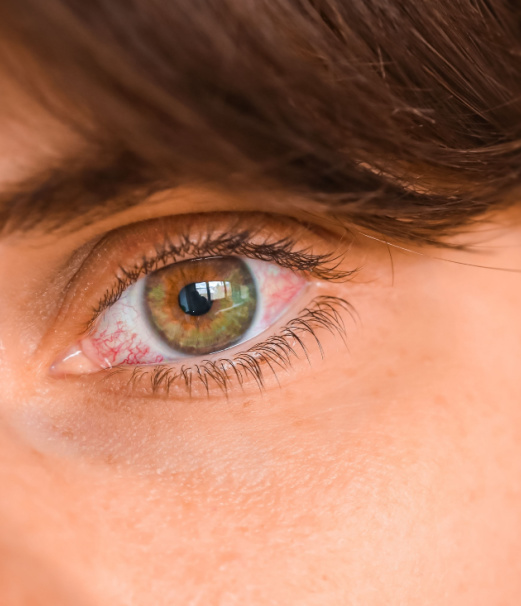Do you suffer from red and itchy eyelids?

Blepharitis is a common eye condition that involves inflammation of the eyelids. While it may not always be a serious threat to vision, it can cause discomfort and affect the overall health of your eyes. In this blog post, we'll delve into the causes, symptoms, and various treatment options available for managing blepharitis.
What is Blepharitis?
Blepharitis is characterized by the inflammation of the eyelids, typically at the base of the eyelashes. This condition can be chronic and is often associated with other eye disorders such as dry eye syndrome. There are two main types of blepharitis: anterior, affecting the outside front edge of the eyelid, and posterior, affecting the inner eyelid.
Causes of Blepharitis:
- Bacterial Infections:
Staphylococcus bacteria are often responsible for causing blepharitis. The bacteria thrive on the skin and can lead to inflammation when they infect the eyelid glands. - Dandruff of the Scalp and Eyebrows:
Seborrheic dermatitis, a skin condition that causes dandruff, can also contribute to blepharitis. - Meibomian Gland Dysfunction (MGD):
Dysfunction of the meibomian glands, responsible for producing the oil that helps prevent tear evaporation, can lead to blepharitis.
Symptoms of Blepharitis:
- Redness and Swelling:
Inflamed eyelids may appear red and swollen, causing discomfort. - Itching and Irritation:
Patients often experience itching and a sensation of having a foreign body in the eye. - Crustiness and Stickiness:
The base of the eyelashes may develop crusts or become sticky due to the accumulation of oils and debris. - Watery Eyes:
Paradoxically, blepharitis can also cause watery eyes as a response to irritation.
Treatment Options:
- Warm Compresses:
Applying warm compresses to the eyes can help loosen debris and soothe inflammation. This should be done regularly to provide relief. - Eyelid Hygiene:
Proper eyelid hygiene involves gently cleaning the eyelids with a mild soap or cleanser to remove excess oils and debris. - Antibiotic Ointments:
In cases of bacterial blepharitis, antibiotic ointments or eye drops may be prescribed to eliminate the infection. - Artificial Tears:
Lubricating eye drops or artificial tears can help manage symptoms of dry eye associated with blepharitis. - Anti-inflammatory Medications:
In more severe cases, anti-inflammatory medications or corticosteroid eye drops may be prescribed to reduce inflammation.
Prevention:
- Maintain Good Eyelid Hygiene:
Regularly clean your eyelids to prevent the buildup of oils and debris. Do not use baby shampoo! - Manage Dandruff:
If you have seborrheic dermatitis, treating dandruff on the scalp and eyebrows can contribute to managing blepharitis. - Regular Eye Exams:
Schedule regular eye exams with an optometrist to detect and address blepharitis early on.
In conclusion, blepharitis is a manageable condition with proper care and attention. If you experience symptoms of blepharitis, it's crucial to seek professional advice to determine the underlying cause and receive appropriate treatment. Remember, maintaining good eye hygiene is key to preventing and managing blepharitis effectively.




